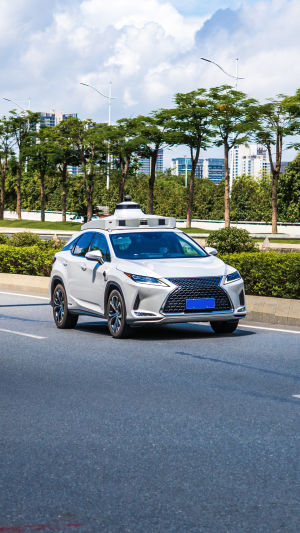A car is a vehicle powered by an engine and typically has four or more wheels, designed for non-railway transportation.
Cars are primarily used for transporting passengers and/or goods, towing other vehicles carrying passengers and/or goods, or for specialized purposes. In October 1885, German engineer Karl Benz successfully developed the world's first practical automobile powered by an internal combustion engine.
In 1886, Daimler installed a horizontal engine on a carriage, creating the first Daimler automobile. In 1913, the Ford Motor Company introduced the world's first assembly line for the Model T car. In 1978, Japan developed cars using alternative fuels. Cars, with smaller sizes and limited carrying capacities, primarily offer convenience for families or individuals.
A typical car consists of four basic parts: the body, powertrain (engine, gearbox), chassis, and electronic/electrical equipment. The four major systems of a car are the driving system, power system, safety system, and the networked system.
1769 Frenchman N.J. Cugnot created a three-wheeled steam-powered vehicle using coal gas combustion. However, it only reached speeds of 4 km/h and required refueling coal into the boiler every 15 minutes, causing inconvenience. This vehicle eventually crashed into a brick wall during one of its journeys and was destroyed.
In 1879, German engineer Karl Benz successfully experimented with a two-stroke experimental engine. In October 1883, he established the "Benz & Cie. Rheinische Gasmotoren-Fabrik" and in 1885, in Mannheim, he produced the first Benz patent motor car.
This three-wheeled vehicle featured a two-stroke, single-cylinder, 0.9-horsepower gasoline engine and embodied some fundamental features of modern cars like spark ignition, water cooling, steel tube frame, steel plate spring suspension, rear-wheel drive, front-wheel steering, and hand-operated brakes. On January 29, 1886, Karl Benz applied for a patent for his motor vehicle.
In November of the same year, Karl Benz's three-wheeled motor vehicle was granted the German patent (patent number: 37435a). This is widely recognized as the world's first modern automobile. Due to these reasons, 1886 is commonly regarded as the birth year of the automobile, while some scholars consider the year Karl Benz created the first three-wheeled car (1885) as the year of the car's invention.
In 1829, James from England invented a steam car capable of reaching speeds of 25 km/h, suitable for use as a large carriage. This vehicle had a bulky boiler and required a lot of coal, emitting black smoke and noise, and frequently causing accidents. In 1860, French worker Lenoir invented the internal combustion engine, using a gas engine of about 1 horsepower to drive cars, although its performance was not satisfactory.
However, it was under the influence of this internal combustion engine that cars were developed. From then on, many people aimed to improve the internal combustion engine for use in automobiles. In 1882, German engineer Wilhelm Maybach began researching internal combustion engines. He invented an automatic ignition device using an electric spark for engine ignition.
Based on this invention, he manufactured an excellent gasoline engine. This engine ran at 900 revolutions per minute, had a simple and compact structure, and produced significant power. In 1883, Maybach completed this gasoline engine and the following year began assembling it onto bicycles, tricycles, and quadricycles, creating gasoline engine cars.
Especially noteworthy was the gasoline engine four-wheeled cargo vehicle manufactured in 1886, equipped with a 1.5-horsepower engine and reaching speeds of 18 km/h.
Cars, as wheeled road vehicles equipped with lightweight power and self-propulsion, did not appear as they do today at the time of their invention. The development of cars underwent a long process. Over more than 100 years of continuous improvement and innovation, it has condensed human wisdom and craftsmanship.
It has also benefited from various industries such as petroleum, steel, aluminum, chemicals, plastics, machinery, electricity, road networks, electronic technology, and finance, driving their development. Cars have evolved into vehicles with various forms, and different specifications, widely used in various fields of socio-economic life. Since 1970, the global number of cars has almost doubled every 15 years, reaching a production of 87.38 million units in 2013.





